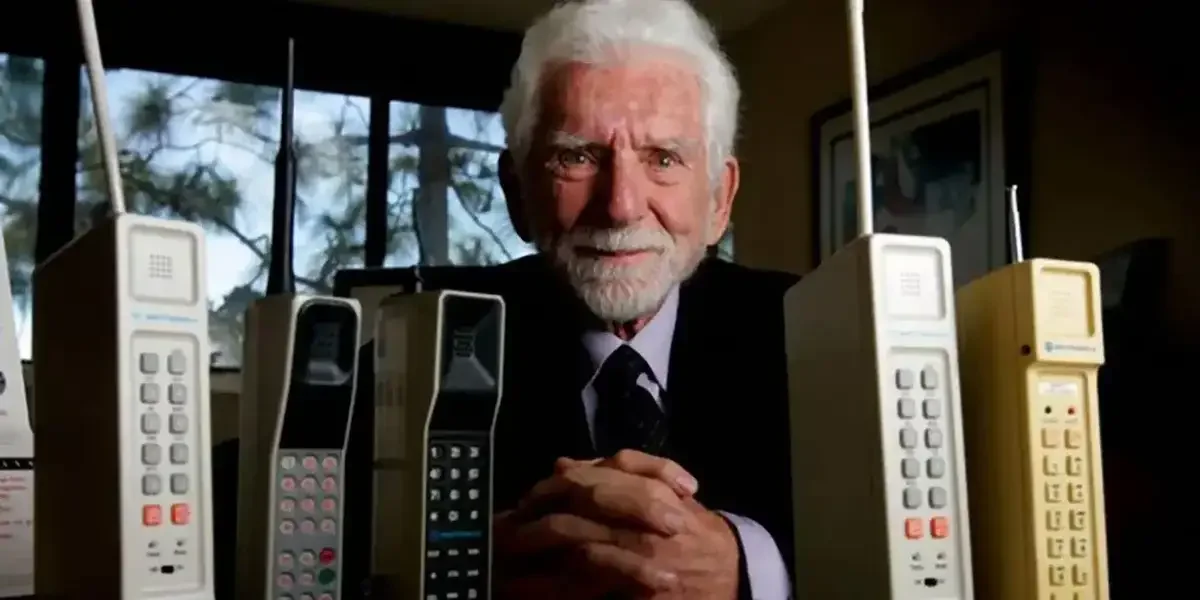The first mobile phone call was made 50 years ago on April 3, 1973. How far technology has come since then and where it will take us in the near future.

It has been 50 years since the first wireless mobile phone call was made. On April 3, 1973, Motorola engineer Martin Cooper made the world's first wireless cell phone call from Manhattan to his commercial rival Dr. Dr. Joel S. Engel of Bell Labs in New Jersey.
Martin Cooper, along with a gaggle of reporters, proudly told Engel, “Joel, I'm Marty. I'm calling you from a cell phone, a real portable cell phone."
Imagine Engel's face as he works with AT&T to be the first to make the same discovery!
"There was silence on the other end. I suspect he was grinding his teeth,” Cooper recalled of the historic call to a BBC interview the 2011.
In our day people and especially the young kids find it hard to understand how revolutionary this call would be. Many compare it to the first telephone call ever made by Alexander Graham Bell in Boston on March 10, 1876.
Mobile phone and history
The first cordless cell phone Cooper used was an early prototype of what would later become the DynaTAC 8000X. Needless to say, for its time the DynaTAC was a true engineering marvel. It worked on a 1G network and ten years later, in 1983, the phone went on sale in the US for $3.995 (about $12.000 today).
For those whining about it phone them, the DynaTAC lasted just 30 minutes of talk time and required 10 hours to charge. At that time as you understand voicemails became popular,
Eight years later, in 1991, 2G appeared, and shortly after that, in 1995, VoIP (Voice over Internet Protocol) came along, which helped people save money by allowing calls to be made over the Internet instead of the cellular network. In 1999, the Japanese Kyocera VP-210 became the first phone with a camera and video.
The age of smartphones and the internet
Today, 50 years after the first mobile phone call, there are twice as many phones as there are people. And thanks to Moore's law, smartphones have become so powerful that we now use them not only for communication, but also for entertainment, work, navigation, education, fitness, translation, data storage and more.
It is essentially a small cell phone computer who by the way also makes phone calls!
Cooper's future and vision
Many believe that technological development has slowed down and that smartphones have peaked, since everything looks pretty much the same anymore. While this is true to some extent, there is much more to look forward to, much more than you might imagine.
"We're still in the infancy of what we call the cell phone and personal communications," Cooper says in an interview. “Think about how unnatural and uncomfortable it is to want to talk to someone and hold that flat piece of plastic on your head. It makes absolutely no sense,” referring to the implantable technology under the skin.
Cooper's vision for the future is to "make the app obsolete, and have something build the app for you." Something related to a world where technology blends into the background of everyday life. Calling someone should be as simple as thinking, and not require opening an app, dialing a number, and pressing a button.
It is possible that we too will be able to see such a world, where there will be incredibly fast networking (let's call it 10G), mixed reality, artificial intelligence, smart glasses and everything to be done with thought alone. This future may no longer be the stuff of science fiction, but something we can achieve in the next 50 years.





